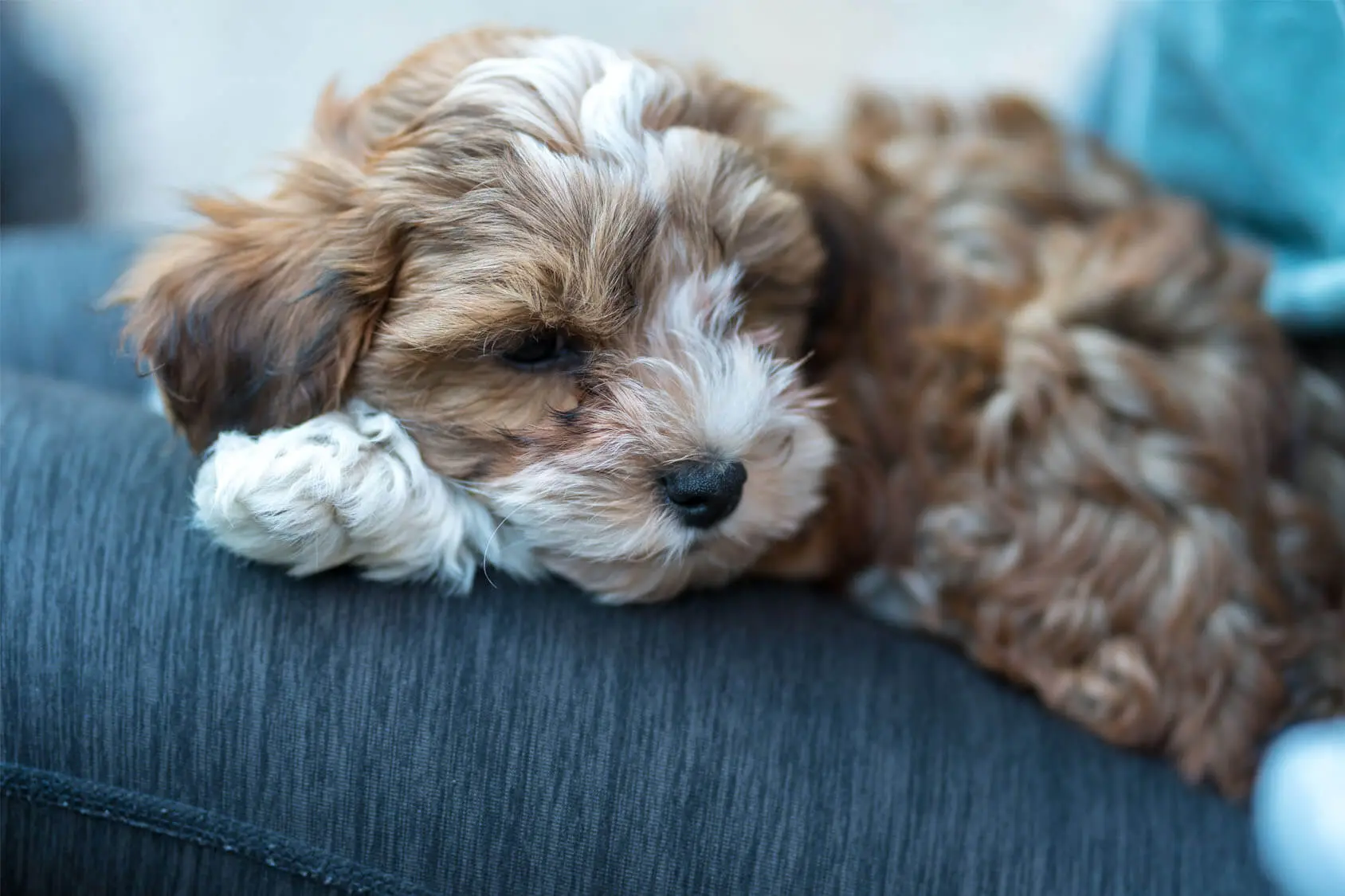
From Adobe Stock
Imagine, if you will, a dog that encapsulates the spirited zest of the Havanese with the refined intellect of a Poodle. This isn’t just a pet; it’s a bundle of joy, wrapped in soft fur, ready to embark on every adventure with a wag and a smile. The Havapoo (also called the Poovanese), a delightful mix of Havanese and Poodle, is more than just a dog; it’s a testament to the magic that happens when two distinct breeds merge into one heartwarming package.
The Havapoo inherits its Havanese parent’s sociable and affectionate nature, making it an excellent companion for families and individuals alike. From the Poodle side, it gains a sharp mind and a hypoallergenic coat, appealing to those with allergies and a preference for minimal shedding. This blend results in a dog that’s not only a joy to be around but also adaptable to various living situations, from spacious homes to compact apartments.
As we journey further into the world of Havapoos, I invite you to join me in uncovering the layers that make this breed so special. From their heartwarming antics to their adaptability and easy-care coat, there’s much more to these fluffy companions than meets the eye.
TABLE OF CONTENTS
- Havapoo Quick Breed Summary
- Origins of the Havapoo
- Havapoo Appearance
- Havapoo Temperament
- Caring for a Havapoo
- How To Train A Havapoo
- The Most Common Health Problems Among Havapoos
- Frequently Asked Questions About Havapoos
- So, Is the Havanese Poodle Mix Right for You?
- More Havanese and Miniature Poodle Mixes
Havapoo Quick Breed Summary
| Size | 8 to 15 inches |
| Weight | 15 to 45 pounds |
| Lifespan | 12 to 15 years |
| Coat | Wavy or curly, medium-long length |
| Color | Black, white, brown, grey |
| Shedding Tendency | Minimal |
| Temperament | Sociable, affectionate, intelligent, resilient |
| Socialization | Great with other pets |
| People Skills | Great with people, can be aloof with strangers at times |
| Good with Children | Great with kids (playful and gentle) |
| Activity Levels | Very energetic, requires regular exercise |
Origins of the Havapoo
Diving into the origins of the Havapoo offers a fascinating glimpse into the rich combination of canine genetics and the intentional blending of traits to create a dog that’s as endearing as it is intelligent. This journey takes us back to the roots of two distinct breeds: the lively Havanese, with its vibrant history tied to Cuban culture, and the astute Poodle, known for its elegance and sharp mind.
The Havanese Heritage
The spirited Havanese, hailing from the sunny shores of Cuba, is more than just a breed; it’s a symbol of companionship and joy. Known for their friendly demeanor and strong bond with humans, this toy dog breed has been a cherished member of families for centuries. It was brought over by Spanish colonists and bred as lapdogs for nobles.
Their lineage as part of the Bichon family contributes to their sociable and affectionate personality, making them not just pets, but true companions. It’s this inherent warmth and adaptability that the Havapoo inherits, setting the stage for a dog that’s eager to love and be loved.
From my personal encounters with Havanese dogs, their ability to light up a room and bring smiles to faces is truly remarkable. This breed’s historical role as a cherished lap dog to Cuban aristocracy speaks volumes about their enduring appeal, an essential trait passed down to the Havapoo.
The Poodle’s Contribution
Enter the Poodle, a breed of non-sporting dogs that brings elegance, intelligence, and a hypoallergenic coat to the genetic mix of the Havapoo. Renowned for their intelligence and trainability, Poodles come in various sizes, each bringing the same sharp wit and dignified presence to the table.
The Poodle is originally from Germany, bred to retrieve waterfowl more than 400 years ago. They were then favored by French nobles and aristocrats – their good looks and entertaining personality made them popular companions.
The Poodle’s contribution to the Havapoo goes beyond just intelligence and a friendly coat. My experiences with Poodles have always been marked by their quick learning ability and noble demeanor, qualities that they generously pass on to the Havapoo mix. This blend of the Havanese’s sociability and the Poodle’s refined traits results in a companion that’s both smart and incredibly lovable.
The Birth of the Havapoo
The Havapoo’s history is a more recent tale, emerging as part of the designer dog trend that gained momentum in the late 20th and early 21st centuries. Breeders sought to combine the best traits of the Havanese and the Poodle, aiming for a dog that embodied the Havanese’s friendly nature and the Poodle’s intelligence and hypoallergenic coat. The result was the Havapoo, a breed that quickly captured the hearts of dog lovers looking for an affectionate, smart, and low-shedding companion.
As a relatively new addition to the canine world, the Havapoo doesn’t have a centuries-old history like its parent breeds. However, what it lacks in historical depth, it makes up for in the rapid growth of its popularity among families and individuals seeking a versatile and loving pet. The Havapoo stands as a testament to the successful blending of two beloved breeds, offering a glimpse into the future of thoughtful canine companionship.
Havapoo Appearance
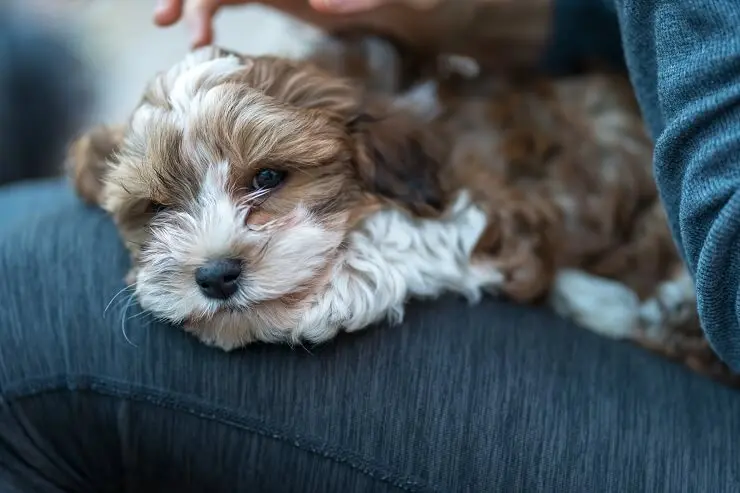
From Adobe Stock
The Havapoo carries a unique charm in its appearance that captivates at first sight. Let’s look at the physical characteristics that define this lovable mix, painting a picture of its size, coat, and overall look that makes it so appealing to a wide audience.
Size and Build
One of the first things you’ll notice about a Havapoo is its endearing size. Typically falling into the small to medium range, Havapoos can vary in weight from about 15 to 45 pounds, depending largely on whether the Poodle parent was a toy, miniature, or standard size.
Their height at the shoulder usually ranges from 8 to 15 inches, making them a comfortable fit for both apartment living and homes with more space. The Havapoo’s build is sturdy yet graceful, reflecting a balance between the Havanese’s compactness and the Poodle’s elegant structure.
In my experience, the Havapoo’s size makes it an ideal companion for a variety of lifestyles. Whether joining on a brisk walk through the neighborhood or cuddling up on the couch, their adaptable size ensures they’re always a perfect fit.
Coat Characteristics
The Havapoo’s coat is a standout feature, inheriting the Poodle’s hypoallergenic qualities and the Havanese’s soft, silky texture. The coat can range from curly to wavy, showcasing a variety of colors including black, white, brown, grey, and a mix of these shades. This diversity in coat type and color means that no two Havapoos are exactly alike, each bearing its unique flair.
As someone who appreciates the practical and aesthetic aspects of dog breeds, I find the Havapoo’s coat particularly appealing. Not only does it require relatively low maintenance, but it also offers a variety of grooming styles to fit the owner’s preference and the dog’s lifestyle. Whether kept in a longer, flowing cut or a shorter, more manageable trim, the Havapoo’s coat is always a sight to behold.
Expressive Features
The Havapoo’s face is another element that draws attention, with expressive eyes and a friendly, intelligent expression that seems to reflect its Havanese and Poodle heritage. Their eyes, often dark and almond-shaped, sparkle with curiosity and warmth, while their ears hang close to the head, framing their face and enhancing their approachable appearance.
Each time I meet a Havapoo, I’m struck by the way their facial expressions seem to convey a range of emotions, from playful mischief to serene contentment. It’s this expressiveness that often makes Havapoos such a joy to photograph and share with others, as they seem to have an innate ability to connect with humans on a deeply emotional level.
Havapoo Temperament
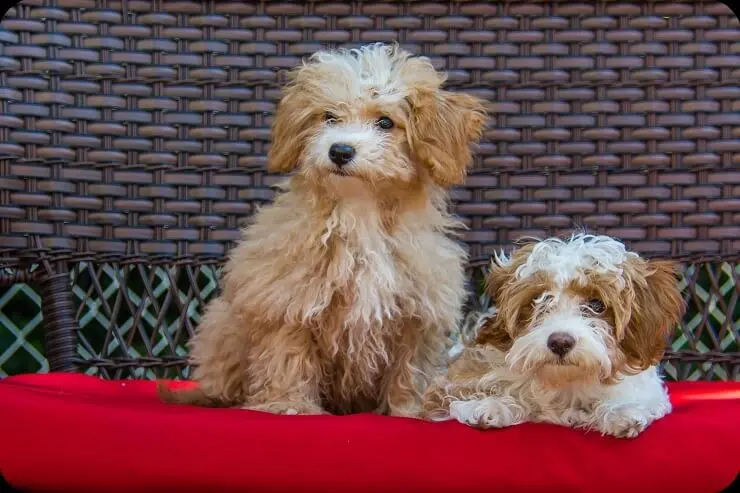
From Adobe Stock
The Havapoo’s temperament is where this delightful mix truly shines, blending the cheerful and companionable personality of the Havanese with the intelligent and trainable character of the Poodle. This section explores the behavioral traits that make Havapoos such cherished pets, highlighting their social nature, intelligence, and adaptability.
Sociable and Affectionate
Havapoos are renowned for their loving and friendly disposition. They thrive on human interaction and form strong bonds with their family members, making them excellent companions. Their Havanese heritage contributes to their warm and sociable nature, ensuring they are always eager to participate in family activities, whether it’s a quiet evening at home or an outdoor adventure. The joy they find in companionship is infectious, often making them the center of attention and affection in any household.
From personal observation, the Havapoo’s sociable nature makes them fantastic pets for families with children and other pets. They have a gentle demeanor that makes them patient and forgiving playmates, always ready to engage in playful activities or simply relax by your side.
Intelligent and Trainable
The intelligence inherited from their Poodle lineage makes Havapoos quick learners, eager to please, and capable of mastering commands and tricks with the right guidance and training. This intelligence, coupled with their desire to engage with their human counterparts, makes the training process not only successful but also an enjoyable bonding experience for both the pet and the owner.
I’ve found that Havapoos respond best to positive reinforcement techniques, such as praise and treats, which capitalize on their eagerness to please and their quick wit. This approach not only fosters a positive training environment but also reinforces the strong bond between Havapoos and their owners.
Adaptable and Resilient
Havapoos possess a remarkable ability to adapt to various living situations, making them suitable for a wide range of homes, from apartments to sprawling houses with yards. Their adaptable nature is complemented by a resilience and even-tempered disposition that helps them navigate new experiences and environments with ease.
In my experience, the Havapoo’s adaptability extends to their ability to adjust to their owner’s lifestyle. Whether you’re a more active individual who enjoys regular outdoor activities or someone who prefers a quieter, more sedentary lifestyle, Havapoos are content as long as they are by your side, participating in your daily routine.
Caring for a Havapoo
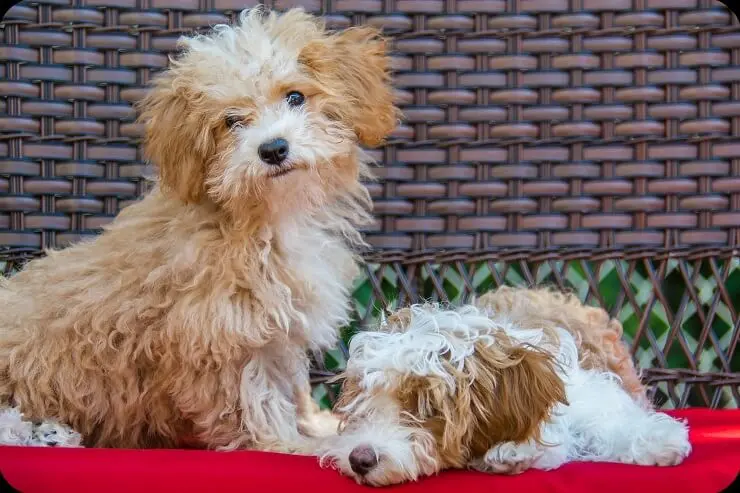
From Adobe Stock
Caring for a Havapoo is a rewarding journey, one that’s filled with plenty of tail wags, joyful moments, and the unmistakable bond that forms when you’re not just a pet owner, but a pet parent.
Nutritional Needs
When it comes to feeding a Havapoo, the key is quality and consistency. These little bundles of energy thrive on a balanced diet that supports their active lifestyle. Give your Havapoo a high-quality dog food that caters to their size, age, and activity level, ensuring it’s rich in nutrients and lean proteins to keep their muscles strong and their coat shiny. If you have a pregnant Havapoo, consider incorporating specialized diet food for pregnant dogs into her meals to ensure she receives the necessary nutrients to support her and her developing puppies. I’ve found that incorporating some variety, like occasional healthy treats or vet-approved human foods, can keep mealtime exciting and cater to their curious palate.
Remember, portion control is crucial to prevent overfeeding, as Havapoos can be prone to obesity if not monitored. Regular meal times and measured portions help maintain a healthy weight and prevent any digestive issues.
Grooming Essentials
The Havapoo’s coat, a beautiful blend of the Havanese and Poodle’s, requires regular grooming to keep it looking its best and to prevent matting. Depending on their coat type, which can range from wavy to curly, brushing a few times a week with a suitable brush can keep their fur in top condition. Regular grooming sessions are not just about maintaining their appearance but also a wonderful opportunity to strengthen your bond and check for any skin issues or parasites.
Bathing your Havanese Miniature Poodle Mix every few weeks, or as needed, keeps their coat clean and healthy, but be mindful not to over-bathe, as this can strip natural oils from their skin. And let’s not forget about nail trims and dental care; keeping their nails at a comfortable length and maintaining dental hygiene with regular brushing or dental treats is essential for their overall well-being.
Exercise and Play
Havapoos possess a playful spirit and an energy level that’s contagious. They love to play, and regular exercise is vital for their physical and mental health. Daily walks, play sessions in the yard, or interactive games indoors can keep them engaged and fit. I’ve always believed that exercise with your Havapoo is more than just physical activity; it’s an exchange of joy and an investment in their happiness and health.
Their adaptability shines through in their exercise needs as well; Havapoos are just as happy with a brisk walk around the neighborhood as they are with a more relaxed pace, as long as they’re by your side. It’s this versatility that makes them such a joy to care for, fitting seamlessly into your lifestyle and routine.
How To Train A Havapoo
Training a Havapoo is an adventure filled with plenty of laughs, a few challenges, and an abundance of rewarding moments that strengthen the bond between you and your furry companion. With their sharp Poodle intellect and the eager-to-please attitude of the Havanese, Havapoos are not just trainable; they’re enthusiastic learners who revel in the joy of mastering new skills.
Starting with the Basics
Sit, stay, come, and down are the foundational commands that pave the way for a well-mannered pup. What’s wonderful about Havapoos is their quick wit; they catch on fast, making these initial sessions both productive and highly enjoyable.
In my own experience, turning training into a game can make all the difference. Havapoos, with their playful character, respond brilliantly to training that feels like playtime. It keeps their interest piqued and transforms learning into a fun activity rather than a chore.
The Power of Positive Reinforcement
Positive reinforcement is the golden rule when training a Havapoo. These dogs respond best to rewards, whether it’s a tasty treat, a favorite toy, or simply an enthusiastic “Good dog!” Their eagerness to please, combined with a love for rewards, makes positive reinforcement an incredibly effective training method.
One thing I’ve noticed is that Havapoos, with their sensitive nature, can become disheartened by harsh words or negative feedback. Keeping the atmosphere upbeat and encouraging ensures they remain confident and motivated learners.
Socialization and Beyond
Exposing them to different people, pets, and environments early on helps them become well-adjusted and sociable adults. I’ve always found that socialized Havapoos exhibit remarkable adaptability and resilience, traits that serve them well throughout their lives.
But training doesn’t stop at basic commands and socialization. Havapoos, with their sharp minds, love challenges that stimulate them mentally. Trick training, agility courses, or even puzzle toys can provide the mental enrichment they crave, keeping their minds as active and engaged as their bodies.
Consistency is Key
Finally, consistency is the cornerstone of successful dog training. Establishing a routine and sticking to it helps your Havapoo understand what’s expected of them, providing a sense of security and structure. Regular training sessions, even if they’re short, reinforce learned behaviors and keep their skills sharp.
Training a Havapoo is more than teaching commands; it’s about building a relationship based on mutual respect, understanding, and love. It’s a journey that’s as rewarding for the owner as it is for the dog, filled with moments of triumph, bonding, and the joy of watching your Havapoo grow into a confident, well-behaved companion. So, embrace the process, celebrate the small victories, and enjoy every step of this delightful training adventure with your Havapoo.
The Most Common Health Problems Among Havapoos
Raising a happy and healthy Havanese Poodle Mix involves being aware of its unique health needs, inherited from its Havanese and Poodle lineage. While these delightful mixes are generally healthy, certain conditions can arise, making it essential for pet parents to be vigilant and proactive in their care.
Hip Dysplasia
A condition characterized by an improper fit of the hip joint, hip dysplasia can lead to discomfort and mobility issues in Havapoos. Despite being more common in larger breeds, the genetic diversity in Havapoos means this condition can still occur, necessitating careful attention to their joint health.
- Regular Exercise: Engage your Havapoo in regular, moderate exercise to maintain joint health, avoiding activities that may strain their hips.
- Weight Management: Maintain a healthy weight for your Havapoo to reduce stress on their hips and joints.
- Supplements: Consider incorporating joint supplements into their diet, as advised by your vet, to support joint health and mobility.
Luxating Patellas
Luxating patellas involve the dislocation of the kneecap, causing discomfort and an abnormal gait. This condition is especially relevant for smaller breeds like Havapoos and can vary in severity, sometimes requiring surgical intervention.
- Routine Check-ups: Ensure regular veterinary check-ups to detect and manage this condition early.
- Physical Therapy: Engage in prescribed physical therapy exercises to strengthen the muscles around the knee, providing better support.
- Surgical Options: In severe cases, discuss surgical options with your vet to correct the issue and enhance your Havapoo’s quality of life.
Dental Problems
Dental issues, including tartar buildup and gum disease, can pose a significant risk to Havapoos, necessitating a proactive approach to dental hygiene to prevent more severe health complications.
- Regular Dental Care: Brush your Havapoo’s teeth regularly with dog-specific toothpaste to prevent dental problems.
- Dental Treats: Utilize dental treats and chew toys that promote dental health through natural chewing actions.
- Professional Cleanings: Schedule professional dental cleanings with your vet to ensure thorough care and maintenance of your Havapoo’s dental health.
Allergies
Allergies in Havapoos can manifest in various ways, including skin irritations, digestive issues, or respiratory symptoms, making it crucial to identify and manage the underlying allergens effectively.
- Identify Allergens: Collaborate with your vet to pinpoint potential allergens, which may be related to food or the environment.
- Dietary Management: Implement a hypoallergenic diet if food allergies are suspected, following your vet’s recommendations.
- Regular Bathing: Use hypoallergenic shampoos during regular baths to minimize exposure to environmental allergens on your Havapoo’s skin and coat.
Progressive Retinal Atrophy (PRA)
PRA is a genetic condition leading to retinal degeneration and eventual blindness. Awareness and early detection are key to managing this condition in Havapoos.
- Regular Eye Exams: Schedule routine eye examinations to detect signs of PRA early in your Havapoo’s life.
- Genetic Testing: Consider genetic testing for breeding Havapoos to reduce the risk of PRA in offspring.
- Adapt Home Environment: Make adjustments to your home to accommodate a visually impaired Havapoo, ensuring their safety and comfort.
Frequently Asked Questions About Havapoos
Is the Havapoo a good family dog?
Yes, Havapoos make excellent family pets due to their affectionate and friendly nature. They adapt well to various households and bond closely with family members.
Do Havapoos bark a lot?
Havapoos aren’t known to be excessive barkers. Proper training and socialization can help manage their barking behavior effectively.
How long do Havapoos typically live?
Havapoos typically enjoy a lifespan of 12 to 15 years, with proper care potentially extending their life even further.
Are Havapoos high-maintenance dogs?
Havapoos have moderate grooming needs due to their coat but are not considered high-maintenance overall. Regular grooming and exercise are key to their well-being.
Can Havapoos live in multi-pet households?
Absolutely, Havapoos typically get along well in multi-pet households. Their sociable and adaptable nature allows them to coexist peacefully with other dogs and even cats, especially when introduced properly and socialized early.
Can Havapoos be left alone?
Havapoos can manage short periods alone, but they thrive on companionship and can develop separation anxiety if left alone for too long. Providing toys and creating a comfortable environment can help ease their solitude.
Are Havapoos suitable for first-time dog owners?
Yes, their friendly temperament and manageable size make Havapoos a great choice for first-time dog owners, provided they’re committed to regular grooming and training.
So, Is the Havanese Poodle Mix Right for You?
Deciding on the perfect furry friend to bring into your home is a big deal, isn’t it? After diving deep into the world of Havapoos, with their irresistible mix of Havanese charm and Poodle smarts, you might be wondering if this adorable breed is the right fit for your lifestyle.
Havapoos Are For
- Folks Who Love a Full House: If your home is always buzzing with activity and you love the idea of a little furball being part of the family hustle and bustle, a Havapoo might just thrive in your lively household. They adore being in the thick of things and showering every family member with love.
- Allergy Sufferers Who Yearn for Cuddles: If sneezes and sniffles have you wary of dog ownership, a Havapoo’s coat might be the answer to your prayers. Thanks to their Poodle side, they’re often more suitable for those with allergies, making cuddle time a joy rather than a sneeze-fest.
- Adaptable Adventurers: Whether you’re up for an early morning jog or a cozy evening on the couch, a Havapoo’s go-with-the-flow vibe means they’re up for anything, as long as they’re by your side.
Havapoos Aren’t For
- The Super Busy Bees: If your job or lifestyle keeps you away from home for long stretches, a Havapoo might find it tough. They really thrive on companionship and can get a bit blue when left to their own devices for too long.
- Folks Looking for a Fuss-Free Pet: While they’re not the divas of the dog world, Havapoos do need a bit of pampering in the grooming department to keep their locks looking lovely and tangle-free. And let’s not forget the fun and bonding that comes with their training and playtime.
- Guard Dog Seekers: If you’re hoping for a furry friend who doubles as a top-notch security system, a Havapoo might not fit the bill. They’re more likely to welcome an intruder with tail wags and kisses than a fierce bark.
More Havanese and Miniature Poodle Mixes
Want a Havanese mix or Miniature Poodle mix but aren’t keen on the Havapoo? Check out these other hybrid dog breeds:

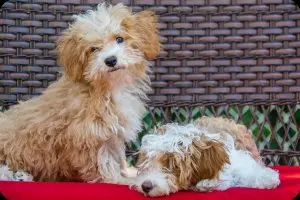


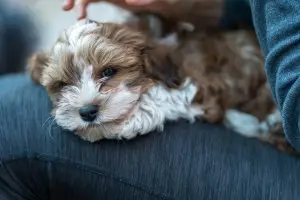
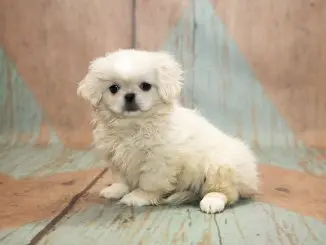
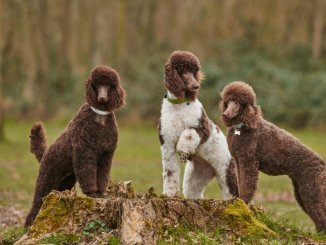
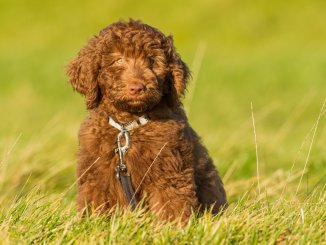
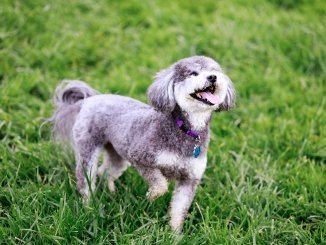
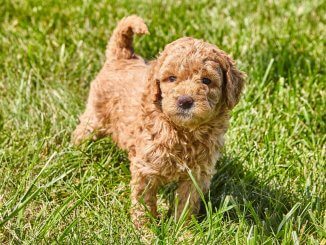
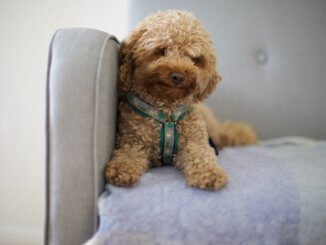
I just got a havapoo-jack russell terrier mix puppy. He is the best thing that has ever happened to me! Reading this I’m learning how much like a havapoo he really is, and it’s very helpful and eye opening.
Can y of u recommend a good breeder in the New York tri state area for a Java pop?
I am looking for a Havapoo puppy sometime after March 2021
I have recently retired and I have read that Havapoos a great dogs for retired people.
If you do or will have any puppies, I look forward to hearing from you.
Hi Carol
Just wondering if you found the right doggie for yourself.
I am now in a silmilar situation. Any helpful hints appreciated.
Thank you, Nance
Hi. Can you tell me the age a female Havipoo should be spayed!
Thanks,
Janr
my grandson has a havenese mix (not sure if it is a poodle mis. He is about 1 year old and has the longest eyelashes and loving eyes however when I take him for a walk and he sees other dogs he growls at them and wants to go after them. otherwise he is the cutest dog. I don’t know if he is protecting me or the reason behind his behavior. Can you give me some help in order to change his behavior.